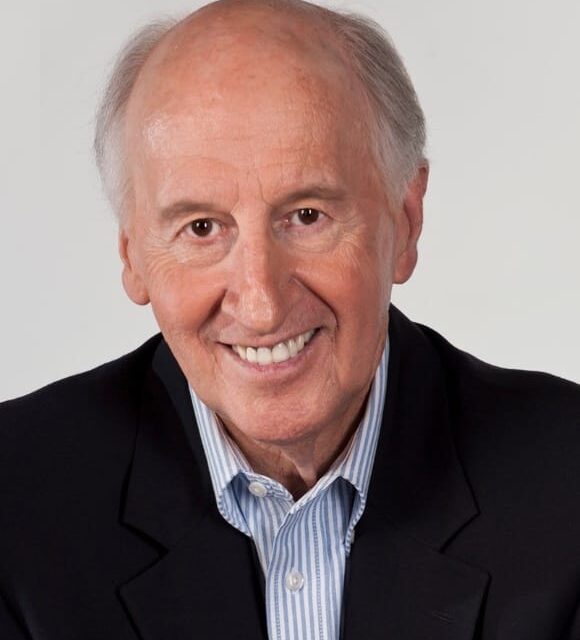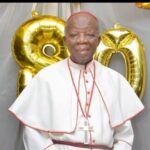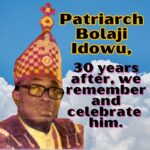The vision of a missional leadership model of renewing a declining church in a post-Christian nation is not to mistake means for ends. The vision is the missional renewal for the leadership and the church as the community of the Holy Spirit rather than a restoration of churches and Christian institutions to their former states of strength. Jack Hayford will not only be remembered as the Foursquare Church leader ‘who taught evangelicals that God is enthroned in the praises of his people.’ Hayford’s identification with evangelicalism or ecumenism is found more in its Pietist and Wesleyan roots, where the emphasis was on “religion of the heart.” At a time when many churches are planning and spending a fortune to manage a declining church, Hayford provides the church today with a biblical leadership model for renewing a declining church. It is important to note that the foundation and the leading cause of the church’s decline are first spiritual, and no arm of flesh can reverse it, but rather, the arms of flesh will only manage a declining church for its ultimate death and funeral. Churches decline when we neglect turning people into committed followers of Jesus Christ. Therefore, the priority of communities of faith must be the mission of reaching lost people and integrating others genuinely.
The church is in deep trouble. Everyone bemoan the church’s decline numerically, institutionally, and in influence. Beyond lower foot traffic and a rising declining church attendance, I agree with Rev Malcolm Peacock that ‘it is not the church that stops people coming on a Sunday, it is faith … as trusting in God.’ Christian faith in God is not blind faith but based on what we can read in the Bible and our relationship with God through Jesus Christ (Heb 11:1,6). Church declines in the gospel’s message as the source of saving faith. The arms of flesh would get the church stuck, decline into maintenance mode, and sadly even into spiritual and mission impotence. Hayford reminds us that church renewal is about the inrush of the Holy Spirit, just as the grieving of the Holy Spirit through the prevailing Babylonian culture declines the church.
Hayford, who died on Sunday, 8th January 2023, at 88, was not just a Pentecostal bridge-builder to other Christians. He was a Christian leader with his salvation and healing testimonies. Born in Los Angeles in 1934, ‘the eldest child of Jack Hayford Sr. and Dolores Farnsworth Hayford, at infant he developed a condition in the tendons of his neck.’ From a non-Christian background, a family member gave a Foursquare church in Long Beach, California, ‘a note with Hayford’s name and diagnosis and asked the people there to pray.’ Hayford sharing his testimony 80 years later, said, “The next day, my parents began to notice that things had changed… Within the next few days, the doctor said, ‘This baby is well. There is nothing wrong with him.’ And not only did the doctor declare me well, he refused to take the money from my parents for the few payments he was going to charge because, he said, ‘I had nothing to do with the healing of this baby. This has to have been something God did.'” Hayford’s healing experiences were a lifetime impact. Based on his healing and ministry experiences, Hayford explained that ‘God heals in three different ways: by natural means, that is, you get a cut, and it just heals itself; By medical means — you went to the doctor or took some medicine; and by prayer — when there’s nothing else but prayer.’
Hayford discerned a call to ministry in high school after he accepted Jesus at age 10. He went to the Foursquare Church’s L.I.F.E. Bible school in Southern California instead of a state college. At the college, Hayford’ met and married Anna Smith at college. Both became ministers in the Foursquare Church and worked with the national denomination’s youth department until 1969 when the Hayfords became pastors of a congregation in Van Nuys.’
In the late ’60s, Van Nuys’ church, one of the first Foursquare churches, was declining and ‘dwindling and could only claim regular attendance of about 25. The place felt suffocating, and Hayford wondered, for a while, if he had made a terrible mistake.’ Hayford’s biblical leadership model of renewing a declining and dwindling church starts with leadership self-examination. Where have we made a terrible mistake, especially in grieving the Holy Spirit? It takes humility and not pride or arrogance to lead change in both one’s and one’s team. Personal reflection is about leadership renewal to keep the leadership aligned with God’s mission, and this does not happen overnight. Using the words of Samuel Chadwick, ‘the root-trouble of the present distress is that Church has more faith in the world and in the flesh than in the Holy Ghost.’ Hayford, moved by the Holy Ghost, cleaned the church with praise. He said, “As I walked through the sanctuary, I would be saying, ‘Praise Your Name, Jesus, Hallelujah, Lord!’ and I would clap my hands— ‘Praise Your Name, oh Jesus, Hallelujah’—I would literally sing the words, clapping my hands. I was conscious of challenging something in the atmosphere of that place.” In response to the Lord saying to him, “May I have this dance,” Hayford, in 1998 at the Promise Keepers Clergy Conference ‘urged the crowd of 40,000 to “dance in the Lord,” saying that he learned the dance in Africa.’
Hayford as a missional leadership model for renewing a declining church, calls us to spiritual warfare challenging the powers in the atmosphere surrounding us. The church and its leadership today are in a toxic atmosphere. Tom Stuckey, a former President of the Methodist Church in Britain, in one of his books Singing the Lord’s Song in a Strange Land: The Future of the Church in Britain, A Methodist Perspective, offers a prophetic insight on the leadership and church captured and carried away by Babylonian culture. Indeed, we are in an atmosphere dominated by Babylonian vision, policies, strategies, and existence, and ‘the glory of Babylon is built on money, power, and control. Hubris and oppression are the outcomes.’ Babylonian culture and atmosphere’ first swallow others before wreaking havoc upon its own people.’ Babylon’s lifestyle is declining the church and destroying the planet (Rev 17:4).
The Holy Spirit moved Hayford with praise to cleanse the church ‘for more than a year until, one Sunday, the church started to change, and the spirit of the place felt different, like there was air to breathe again. After that, it started to grow.’ It is on record that ‘Hayford’s church grew to about 10,000 in weekly attendance by the end of the 1980s.’ Hayford, a biblical leadership model for renewing church decline, summons us to ‘the centrality of worship in the life of the church.’ Hayford’s legacy in promoting charismatic renewal practices points to the Cross as the fountainhead of all God’s wisdom and the source of all His power. At the Cross, humility is assured. The Cross keeps arrogance and pride from gaining ascendancy. At the Cross, holiness is assured there, keeping presumption and ungodliness at bay. For Hayford, ‘a fruitful ministry had to be grounded in prayer and fellowship with Jesus, regular Bible study, personal purity, and self-discipline. A minister’s relationship to God, he said, was the only sure safeguard.’
Let us remember Hayford’s family and congregations in prayer.











Recent Comments